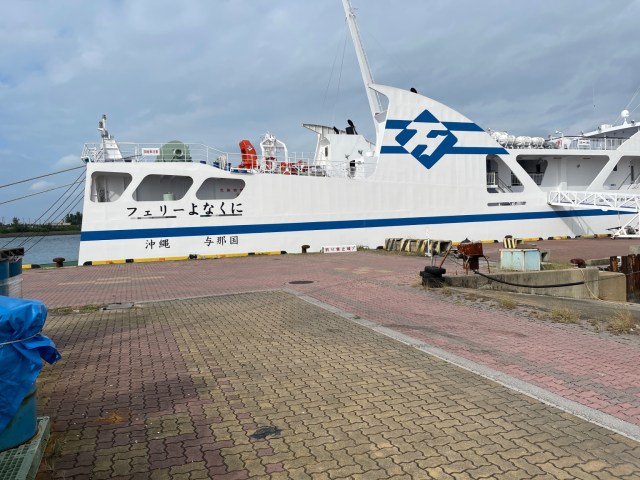
Exploring the not-so-glamorous side of island-hopping.
Japan is blessed with a number of beautiful remote islands, especially down south in the Ryukyu island chain, which stretches southwest from Kyushu to Taiwan.
The westernmost island in this chain, and in Japan in general when it comes to inhabited islands, is a 28.88 kilometre-square (11.15 mile-square) outcrop called Yonaguni. Only accessible by plane or boat, our reporter Masanuki Sunakoma had been keen to cross this remote area off his travel bucket list for a while now, so he decided to make the trip out there recently, opting to go there by ferry, as it was half the cost of a plane ticket.
▼ Yonaguni lies 108 kilometres (67 miles) east of Taiwan
However, after doing some research, he discovered that the ferry to Yonaguni comes with a rather dubious nickname: “Gero Fune“, or in English, “Vomit Ship“.
Still, Masanuki wouldn’t allow that moniker to sway him from his sea-bound adventure, so after spending some time on Okinawa, he travelled to nearby Ishigaki Island, eventually making his way to the Euglena Ishigaki Port Remote Island Terminal to board the Gero Fune, or Ferry Yonakuni, as it’s officially known.
▼ This terminal on Ishigaki Island is the gateway to more remote islands.

Ferry Yonakuni departs from Ishigaki Island only twice a week, on Tuesdays and Fridays, with the return ride from Yonaguni available on Wednesdays and Saturdays.
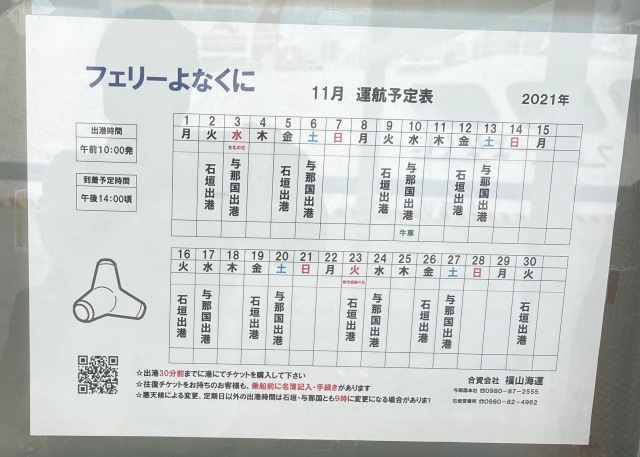
The departure time is 10 a.m., and though tickets need to be purchased at least 30 minutes in advance, Masanuki arrived at the ticket office at 9:40 a.m. Normally, this may have been a problem, but on this particular day the weather was bad so the departure had been delayed by an hour, which meant he was able to purchase his boarding ticket without any problems.
▼ It costs 3,550 yen (US$30.92) to get to Yonaguni, and 3,250 yen for the return trip, which brings the total for a round-trip to 6,800 yen.
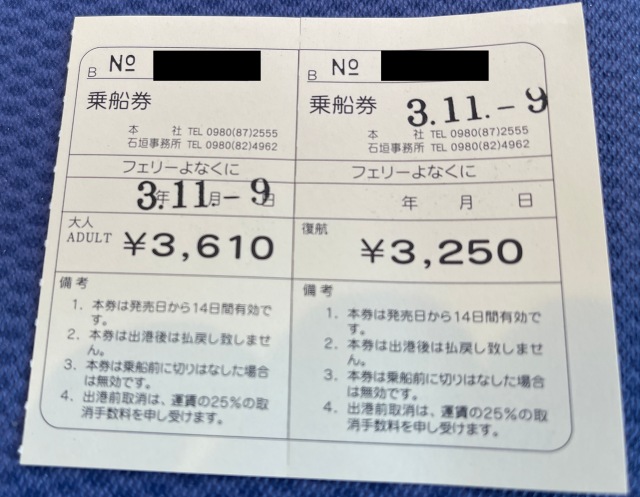
When it came time to board the ferry, Masanuki felt a surge of excitement as he climbed the stairs that led him on to the ship.
▼ It was as if they had rolled out a blue carpet just for his entry.
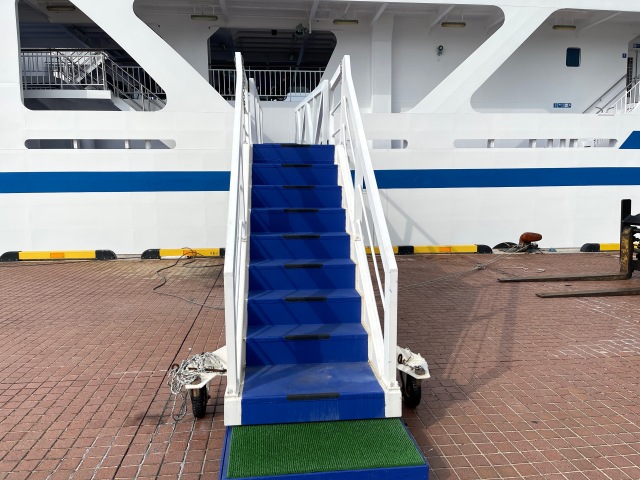
Masanuki’s excitement grew as he passed by the spacious blue deck and he imagined himself relaxing here later on, gazing out at the sea and kicking back with a hot beverage.
▼ Hmm, wonder why those seats are bolted to the deck?
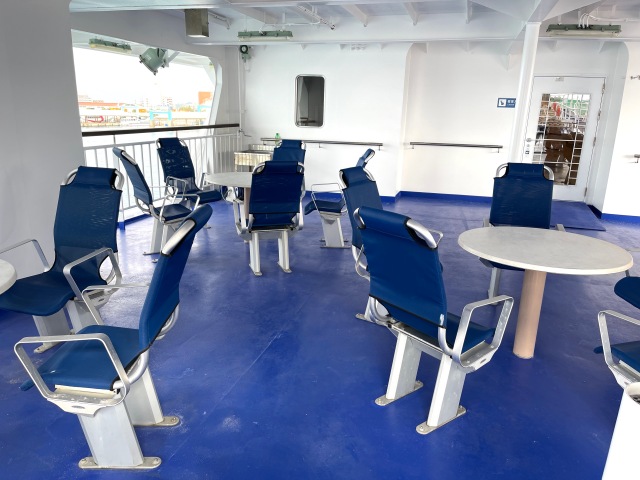
Taking a look at the information board, he could see there were a few different areas where passengers could relax during the four-and-a-half hour ferry ride.
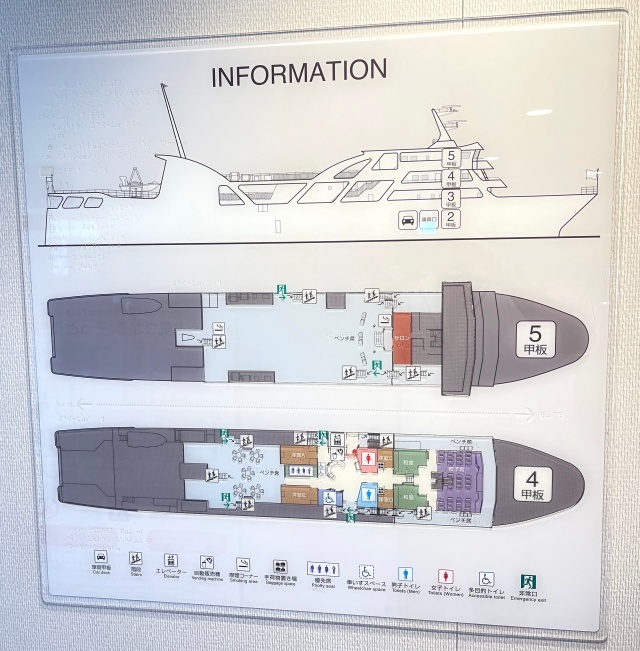
The vessel was beautifully clean, with shiny floors and curved design features throughout, as if to resemble the rolling waves of the sea.
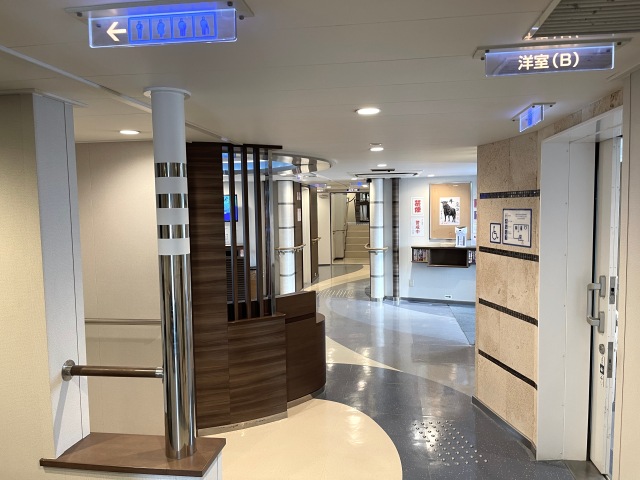
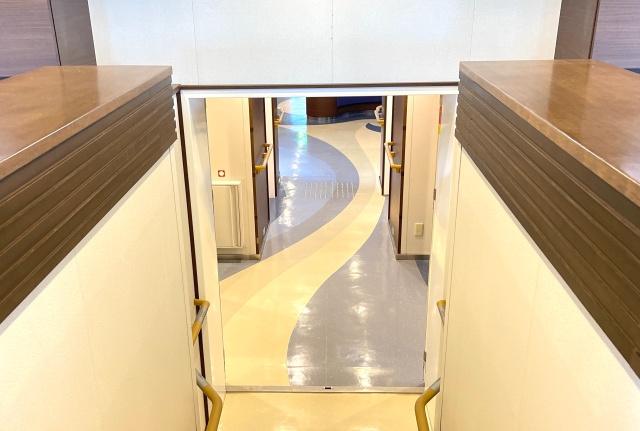
▼ There were three “Japanese-style” rooms, complete with blankets and a carpeted floor for passengers to sleep on…
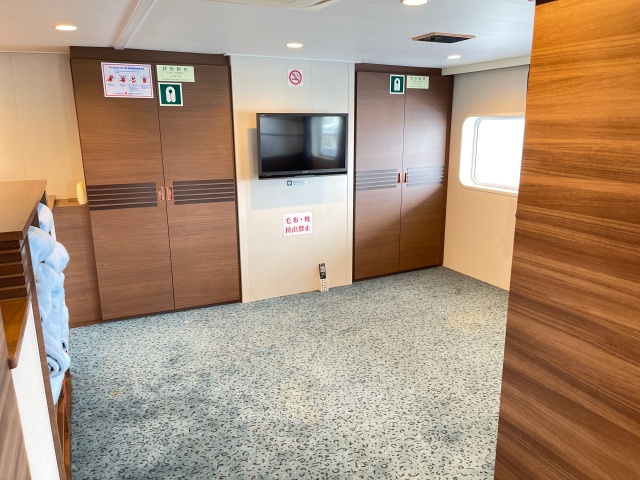
▼…and four “Western-style” rooms equipped with bunk beds.
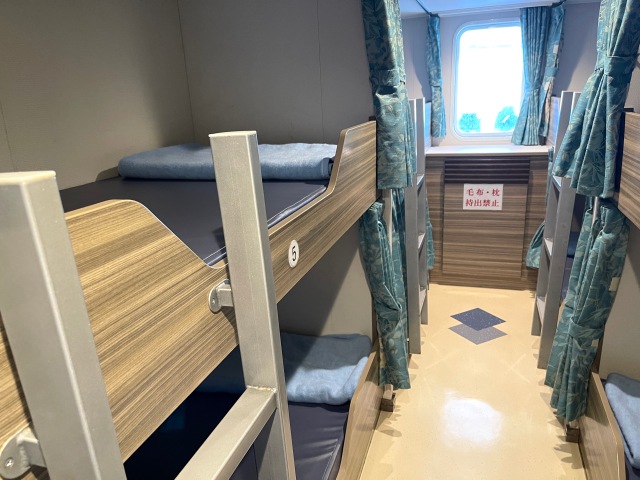
▼ Of course, there was also regular passenger seating for those who preferred to sit and gaze out the windows.
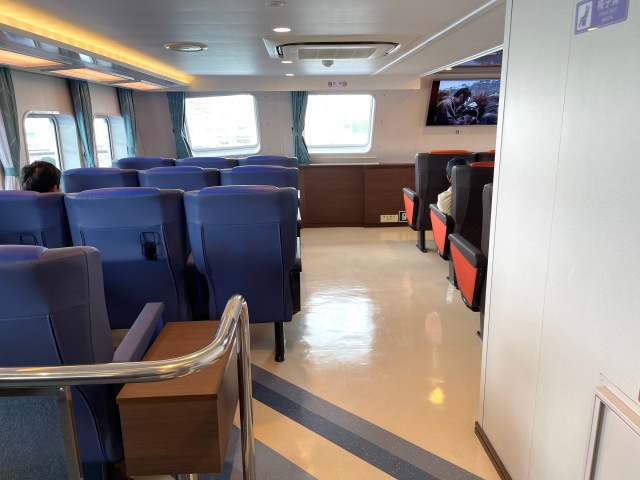
Masanuki was pleased to find that all these facilities were free for him to use, and as he made his way to the deck to view the scene as the ferry departed, he noticed a few other details like handrails, which appeared to be all over the place, and also…
▼ …”etiquette bags“, with a sign that read: “Please use these when you feel unwell”.
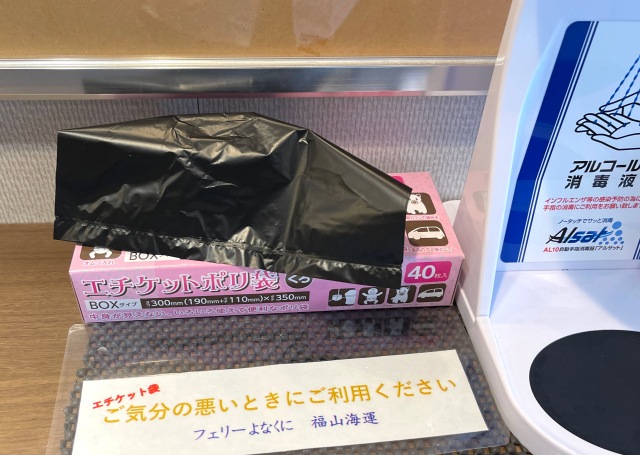
That’s when Masanuki remembered he was on the so-called “vomit ship”, but after seeing how beautiful the ferry was, and how calm the sea was from afar, he felt strangely confident. He’d travelled by ferry to remote islands before and had never been sick on any of those trips, and his recent senbero adventures had given him a stomach of steel, so he strode past the etiquette bags to farewell dry land and feel the sea wind in his hair.
▼ Little did he know, however, that this would be the start of a four-and-a-half journey into hell.
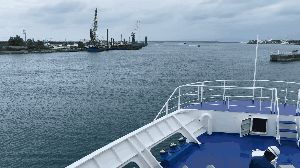
Thirty minutes into the journey, Masanuki took out his laptop, figuring he’d be able to do some work and get at least one article written by the time he arrived on Yonaguni Island. That’s when the movement of the ship, which hadn’t bothered him at first, gradually became stronger. At the one-hour mark after departure, Masanuki’s laptop began rolling around so much that he couldn’t even type on the keyboard.

The up-down swaying of the ship continued incessantly, without a second’s reprieve. Masanuki put his laptop away and stood up, but the swaying was so strong it was difficult for him to even walk, so he sat down again, but that made him feel as if he was on a ride at an amusement park.
Masanuki had never experienced a ride like this, though, and it soon became obvious that he, stomach-of-steel and all, was beginning to succumb to seasickness. He felt weak and queasy, and beads of sweat began to appear on his forehead.

After a few minutes of trying to talk himself out of being sick, he heard his stomach let out a squeak, and he felt the sudden need to be near a toilet for safety.
He dashed towards the bathroom, holding on to those blessed handrails to keep him from flying about the cabin amidst the strong swaying. When he finally arrived at the restroom, he caught glimpse of this receptacle, and instinctively moved towards it.

▼ On the wall beside it was a sign that read: “Request to customers. In the event of vomiting, please do it here.”
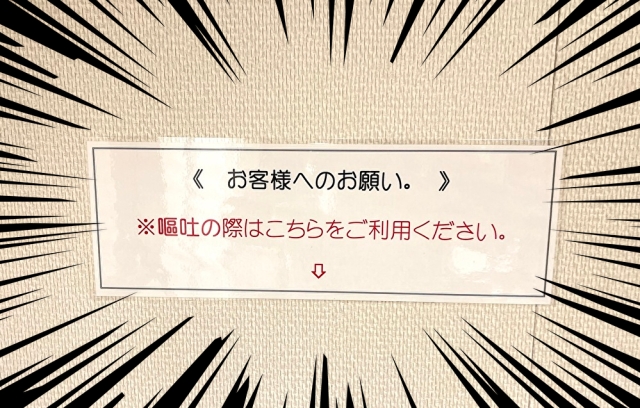
“Oh, yes…I’ll be doing it here“, thought Masanuki as he gripped the handrail at the sink, hunching over to do what he describes as his “first seasickness”.
Feeling a little better, Masanuki cleaned up and exited the toilet, only to see a long line of people waiting to use the restroom, all with faces just as taut and pale as his.
This ferry was really living up its moniker as the “vomit ship”, and Masanuki slowly made his way to the bunk beds to lie down in despair.
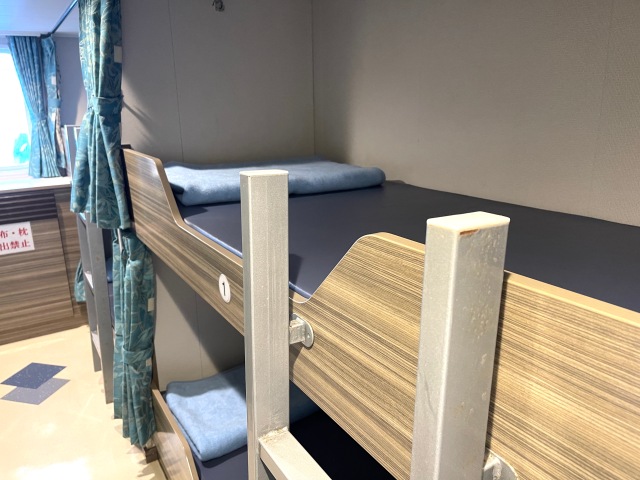
At this point, there were another three hours left in the journey, and the swaying of the vessel still wasn’t showing any signs of easing. Masanuki didn’t have the energy nor the willpower to climb up to a top bunk, so he slid into a bottom bunk and wrapped the blanket around himself as his inner child quietly wept for his mother’s comforting embrace.
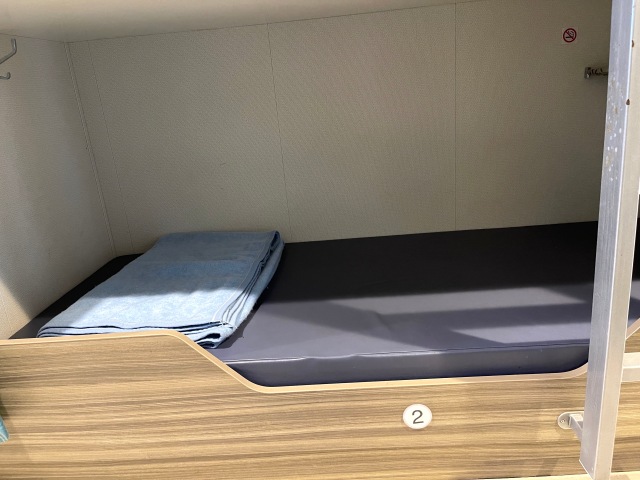
After a few minutes of lying down in a moribund state, Masanuki tried to imagine he was in a bunk in a capsule hotel on dry land. There was a curtain for privacy, lights and power outlets, and even a hook on the wall for hanging your jacket…or maybe your etiquette bag?
Masanuki wished he had a little TV in here to distract his mind and bring it back from the state of despair it was in, but as the minutes ticked by, he slowly became more accustomed to the swaying. He could cope with the constant movement a lot better in a horizontal state, and this helped him to keep the chundering at bay until they finally arrived at the port on Yonaguni Island.
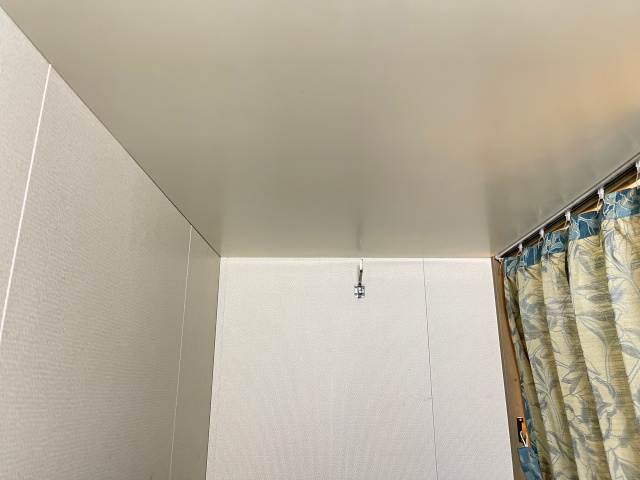
As he left the ship, keen to feel the sweet safety of the earth beneath his feet, and perhaps take up residence on the island so he wouldn’t have to face the journey back again, Masanuki wished he’d laid down right from the start of the trip.
Lying down was a million times better than sitting or standing while the ship was in motion — it made him feel as if his body was swaying side to side rather than lurching up and down so it seemed to be a lot easier on his brain and his internal organs.
So if you are thinking of setting sail and testing your limits on the “vomit ship”, you might want to head straight for one of the sleeping cabins. Thankfully, sleeping cabins are pretty much standard on a lot of Japan’s long-distance ferries, so you’ll be able to find a safe haven and escape to your happy place if you do encounter rough seas.
Still, if you believe travel is all about the journey and not the destination, a ride on the “vomit ship” will definitely give you some tales to tell. And once you do get to Yonaguni, you’ll be able to admire their unique cockroach species, which has just been named and placed under protection by the Japanese government.
All images © SoraNews24
● Want to hear about SoraNews24’s latest articles as soon as they’re published? Follow us on Facebook and Twitter!

No hay comentarios:
Publicar un comentario